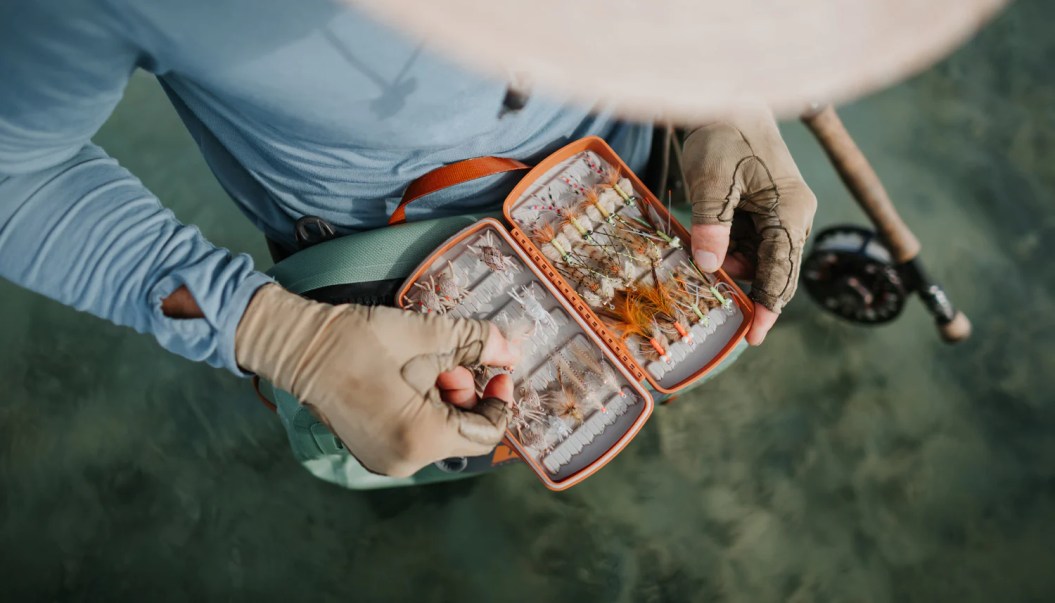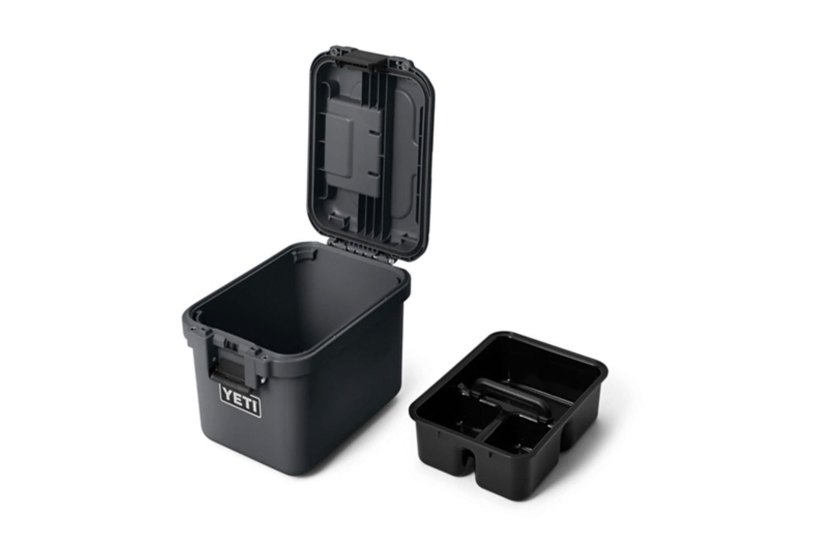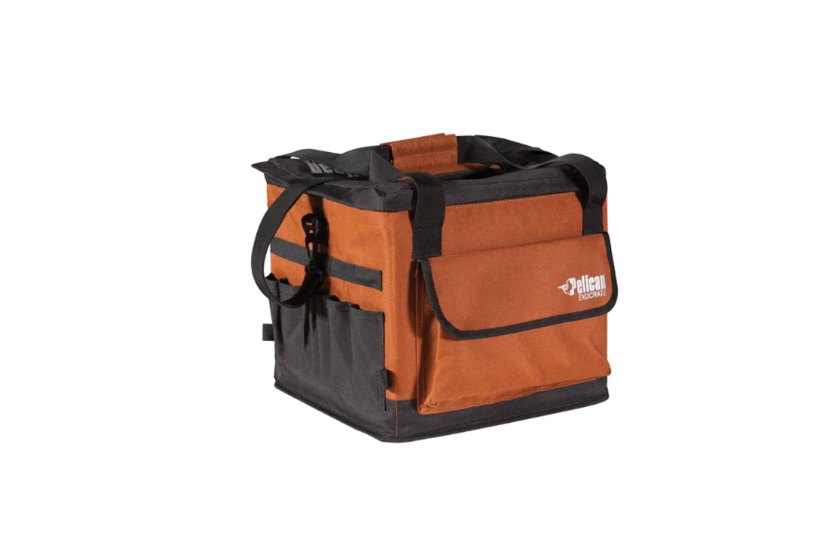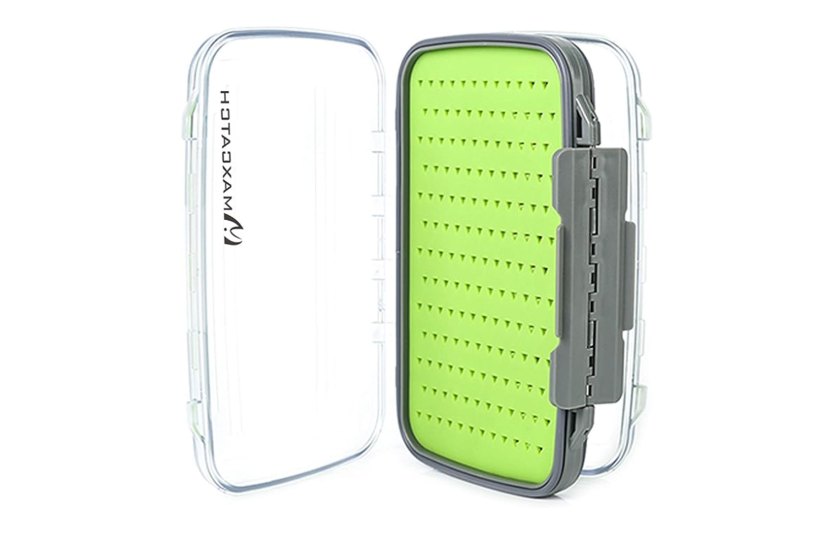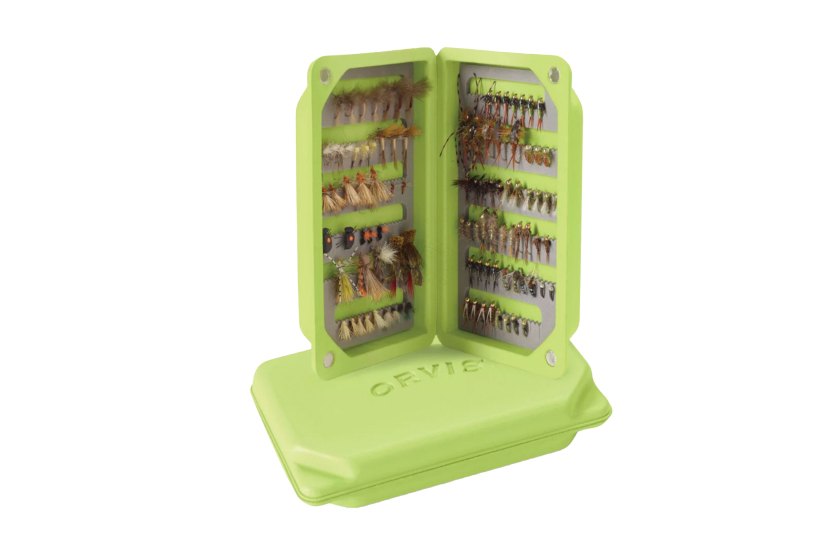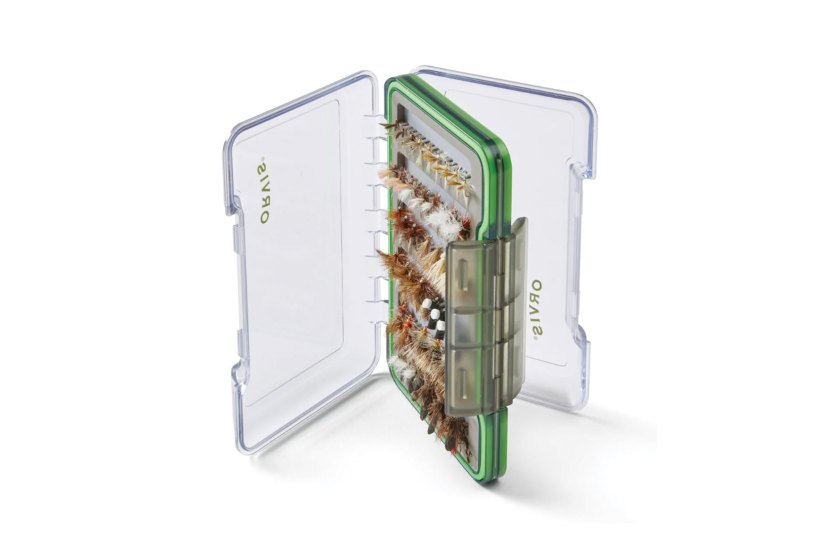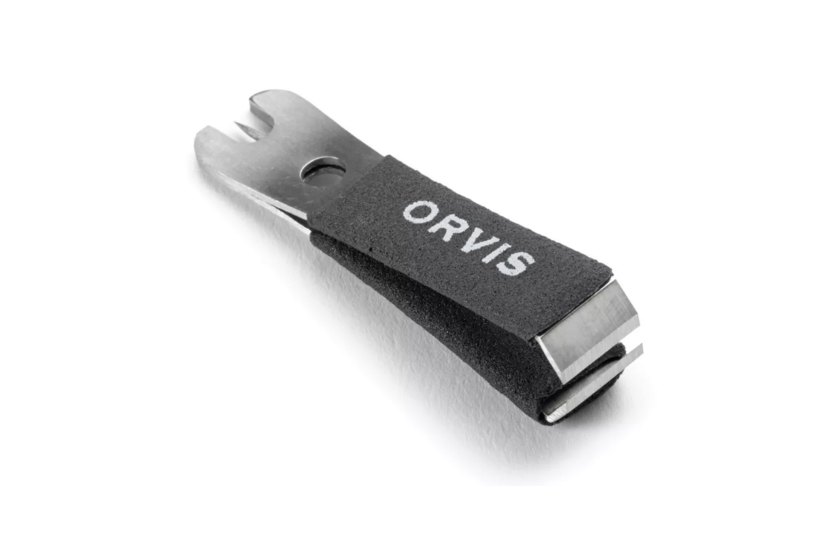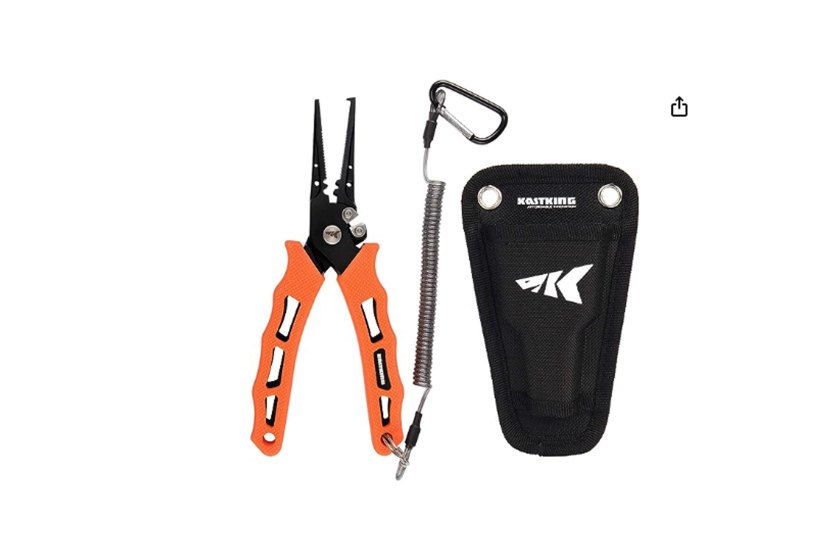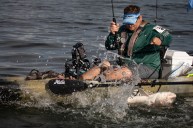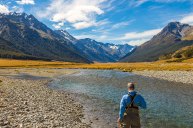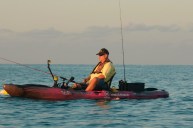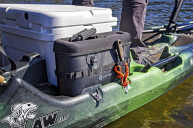You've practiced your cast and you've picked the fishing spot where you want to spend your Saturday—but what fly-fishing gear do you need in your tackle box for a great day of fly fishing? Putting together your kit for fly fishing is a very personal process.
After 20-plus years of fly fishing worldwide for fun and work, I'm still perfecting my terminal tackle kit. And what you need—and want—varies by fishery, location, water, fish species, and current conditions, as well as by what your personal preferences are as an angler.
Whether it's your first time out or you're finally ready to dial your tackle box fully (and stop borrowing your friend's nippers every time), this primer covers the basics you may want to stock in your fly-fishing kit. From there, you can curate and add or subtract depending on your own fishing situation and preferences. After all, much of the fun lies in customizing your kit and equipment to suit your own style.
1. Choose the Right Tackle Box
First and foremost: Do you even want to use a box, or would another vessel suit your needs better? If you're fishing from a boat, an actual box might not be a bad idea. But for most fly anglers, a bag, backpack, or sling pack are the most common choices.
Fly fishermen tend to walk and cover more ground than traditional spin-tackle fishermen, so it's crucial to have a way to carry your fly-fishing gear that's both comfortable when you're covering long miles and that won't interfere with your casting.
Head into your local fly shop and try on a variety of packs and bags; many have specific storage and features designed to hold fly-fishing equipment and supplies.
A few we like:
Tackle Boxes
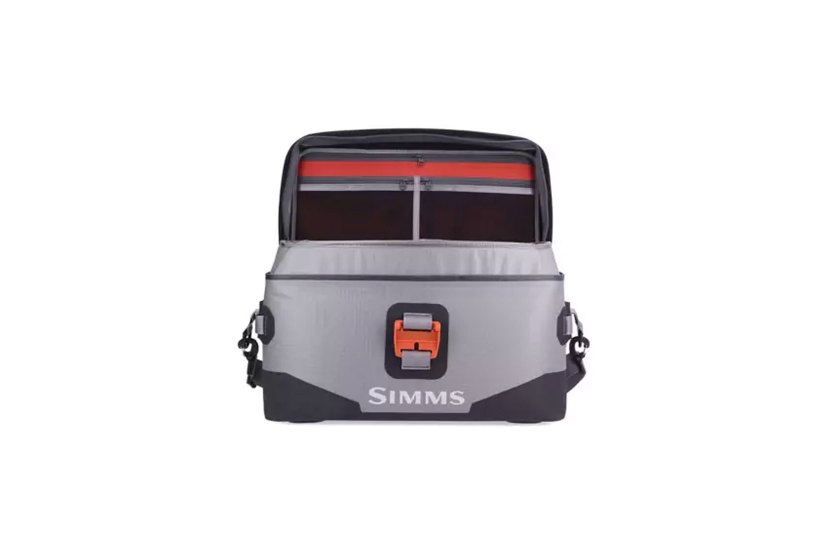
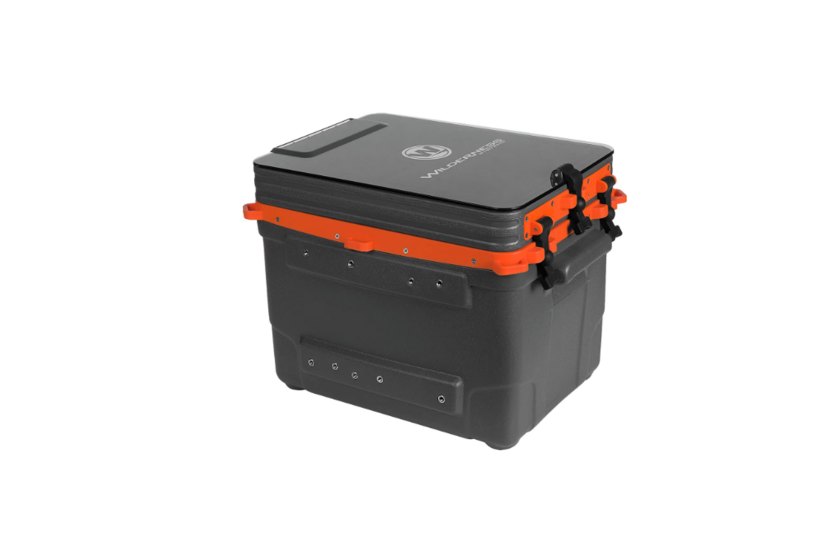
Bags and Packs
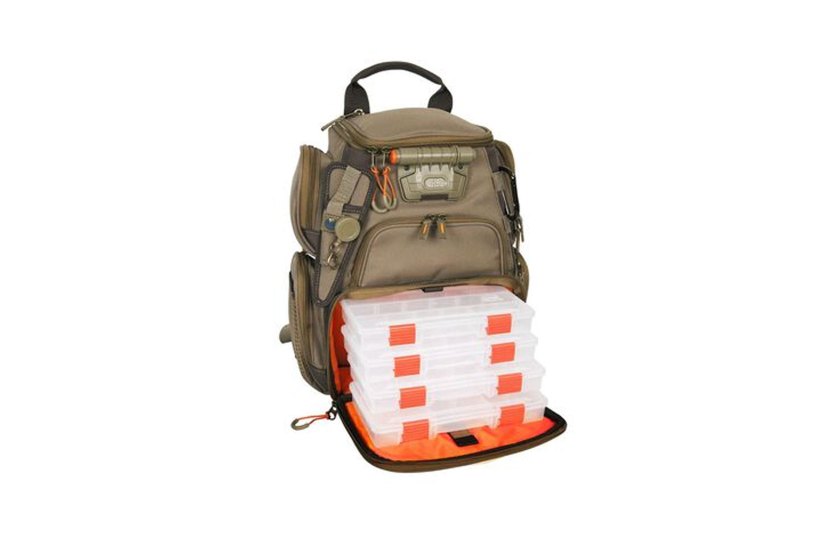
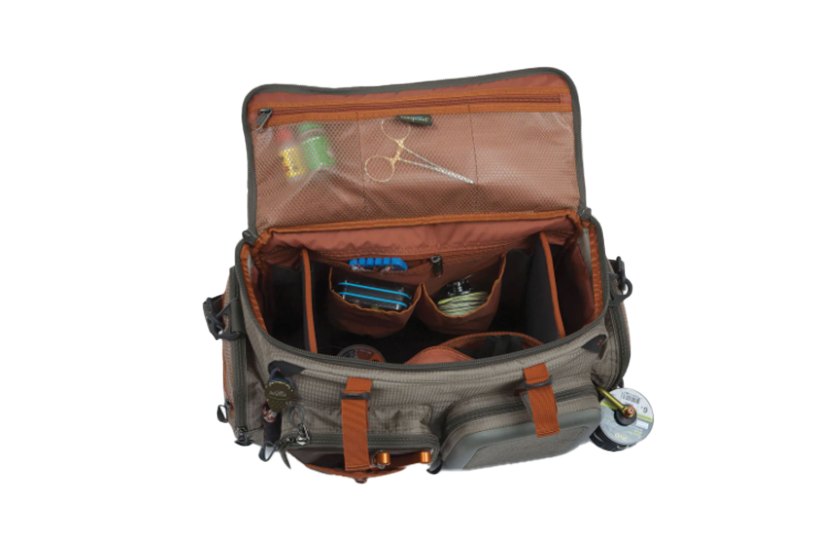
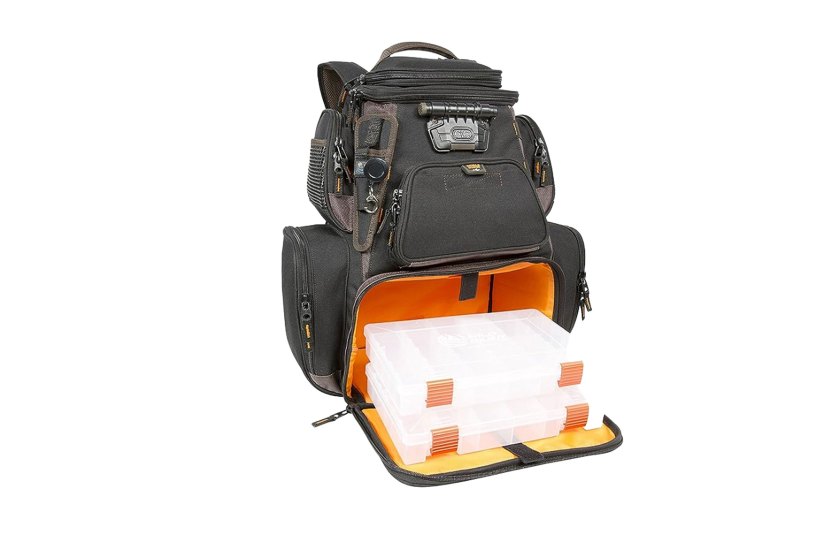
Sling Bags
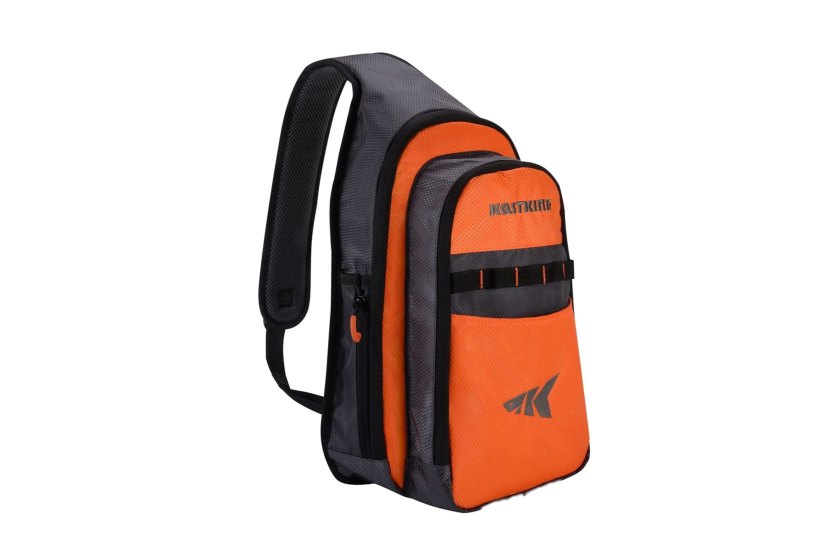
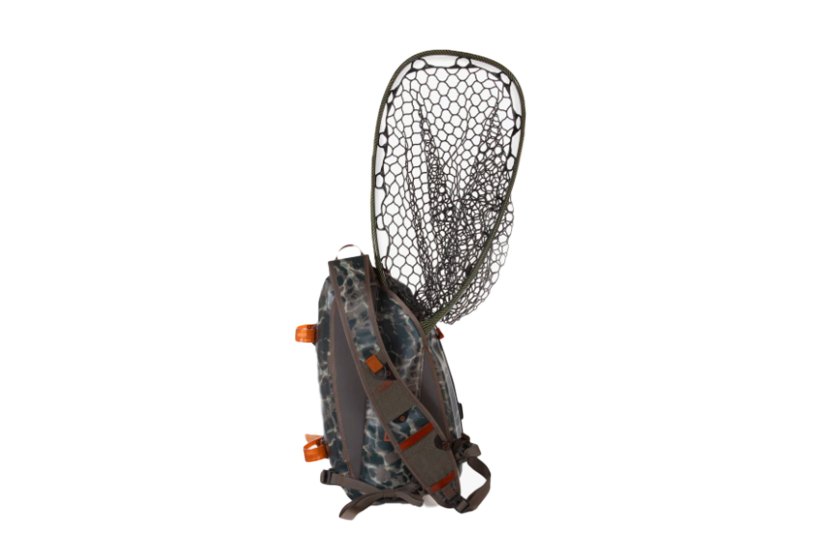
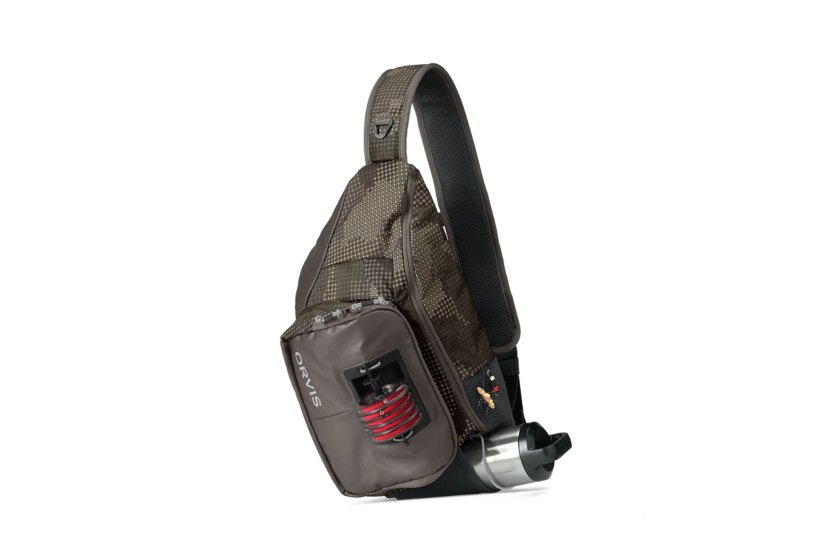
2. Stock Up on Flies
Assuming you've already sorted your fly rod, reel, and line, the next step is picking out your flies. The type of flies you stock are dictated by species and location, but most freshwater anglers will want a combination of:
- Dry flies, which ride on the top of the surface
- Nymphs, or flies which sink into the water column
- Streamers, which imitate small baitfish and are often made to "swim" in the water by pulling on the line, a.k.a. "stripping"
Chat with your local fly shop for advice on which flies work well in your specific waterway for the species you'd like to catch.
3. Organize and Protect Your Flies
Once you have a basic selection of flies, it's smart to keep them both organized and protected from the elements. Your best bet here is to put them in a fly box.
Many modern fly boxes are streamlined and thin, allowing for easy storage without taking up a lot of volume in your pack or tackle box. Streamers and larger flies will, of course, require a larger box.
Ideally, look for a fly box, which seals well to keep out moisture and will hold flies securely. Most are lined with slitted foam, which cradles the hook and keeps the fly in place. Some newer boxes feature silicone inserts, which are more durable and hold flies more securely but tend to cost more.
A few we like:
Fly Organizers
4. Pack a Tippet and Leader
Next, you'll need a tippet and leader. The leader is the thin line that attaches to the end of the fly line and connects to the fly. The tippet is the same material, used to add length to the leader once it's been chopped down after changing flies. Leaders typically come in little packets, and tippet will come in spools.
Like everything else we've talked about above, the sizes of your leaders and tippet will be determined by what species you're after. Most trout, for example, use 3X, 4X, 5X, or even 6X (6X being the finest or smallest diameter of those listed). Smaller-diameter material is harder for the fish to see and offers a more delicate fly presentation, but it can break more easily.
5. Bring Tools
They may not be the first fly-fishing gear you think of, but you'll be happier if you bring along a few select tools.
Nippers are small tools that look like fingernail clippers and are used to trim the edges of tippets and leaders after you've tied on a fly. They're a basic every fly fisherman should have on hand and are offered in a variety of designs.
Fishing pliers, which often look just like the familiar old pliers in your toolbox, often feature a cutter that can accomplish the same thing. For anglers, pliers are commonly used to help pull or pop a fly from a fish's mouth without causing more damage to the fish.
Fly Fishing Tools
6. Consider Other Accessories You Might Want
There's a nearly endless list of optional items fly fishermen can add to their tackle box or fishing backpack. Namely:
- A tippet bar, a clip-on holder that helps organize tippet spools and keep them handy
- A lanyard, which rests around the angler's neck to hold a variety of implements, keeping them handy while fishing
- Flotant caddies to hold bottles of flotant (see below) and that clip onto a pack or vest, ensuring more flotant is easily at hand when needed
Freshwater fishermen will also want to pack:
- Flotants, usually a clear gel or white powder that's rubbed into the fly, help it ride on the surface, imitating a bug floating on the water
- Indicators, which function as balloons to float on the surface of the water, suspend the weighted nymph at the desired depth in the water column below
- Split shot, or small, weighted beads that are clamped onto the leader in order to help the fly drop down into the water column and remain at a certain depth
All fishermen should bring a pair of quality polarized sunglasses that wrap around the face, helping you see better into the water while providing eye protection from errant sharp hooks.
7. Rely on Trial and Error
Much of the fun of choosing your fly-fishing gear is deciding what gear you absolutely need for your specific fishery, then adding on the little touches that make your kit your own (or leaving out the stuff you don't end up using).
Experiment. Borrow friend's kits. Talk with fly shop staff. See what you like and don't like, and grow your fly-fishing kit accordingly.
Tackle Advice for Different Types of Fly Fishing
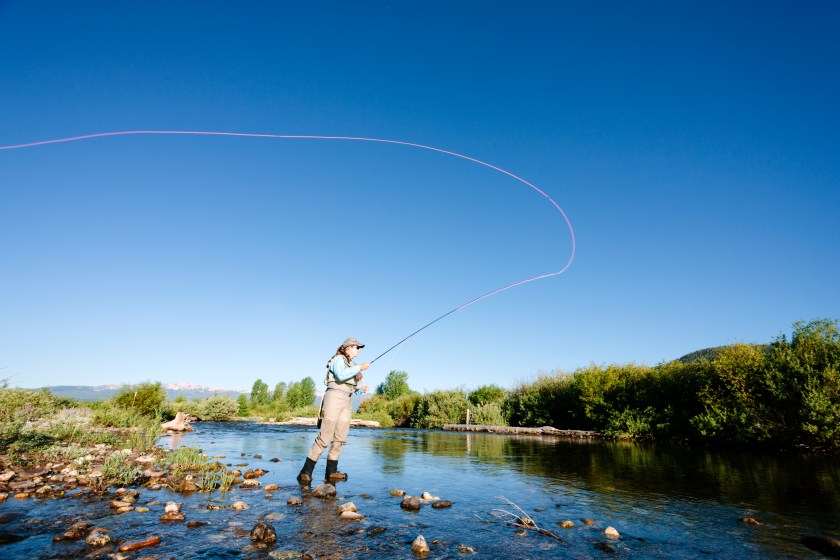
Getty Images, urbancow
For Saltwater Fly Fishing
Your saltwater fly-fishing gear is going to change drastically depending on where you're fishing. Setting up your equipment for a permit in Belize, for example, is vastly different than chasing striped bass on Cape Cod.
A few things to keep in mind:
- Be sure you're matching your line to water temperature: Fly lines come in both cold water and tropical versions, and it's critical you fish a tropical line in warm water and a cold-water line in northern climes, as the lines are specifically designed to perform best at certain temperatures.
- Bright sun is often a concern on saltwater flats. Outfit your box or bag with reef-safe sunscreen and consider sun gloves and a gaiter like those made by Buff to protect your neck and face.
- Quality pliers are a must for saltwater species. Look for a pair that won't rust and rinse them in fresh water after every day of fishing.
- Always rinse all your gear—rods, reels, and flies—each day to elongate its life.
For Fly Fishing for Trout
Most trout anglers will be fishing a 4-, 5-, or 6-weight rod, outfitted with a corresponding line. Again, the necessary gear will depend on where you're chasing trout, the kind of water, and current weather conditions.
Be sure to:
- Visit a local fly shop, for sure. Buy a few flies and ask what's been fishing well.
- If you're unsure where to start, it's hard to go wrong with a fly box stocked with topwater flies such as stimulators, Royal Wulffs, and a classic caddis. At some point, on some water, somewhere, you'll put these flies to use.
For Fly Fishing for Bass, Perch, and Warm-Water Species
Fly fishermen often lament that fly fishing is an investment of both time and money. It's true, and while it's possible to get into fly fishing for a few hundred dollars or even less, anglers who fish a variety of species and travel to fish around the world frequently invest thousands of dollars into their fishing equipment. Most would argue it's 100 percent worth it.
However you choose to invest in and build out your fly-fishing gear, take the time to decide what gear you enjoy, what you really need for your fishery, and what best serves your purposes.
A few places to start:
- Anglers often toss streamers, crayfish, or frog patterns for bass, which are larger flies.
- Due to the size of the flies and the way the bass tend to eat—violent, reactionary strikes instead of a trout's slow sip—many bass anglers prefer stiffer rods with more "backbone" to toss heftier flies.
- Toss a few foam poppers and deer hair bass bugs into your fly box as well; watching a bass eat on the surface is something every fly angler should experience at least once in their lifetime.
Once you have a few items stocked in your box, go out and use 'em!
Fishing gear isn't made to sit on a shelf. Go hit the water and put all that research to good use!
READ MORE: Montana Fly Fishing: The Best Rivers to Fish, from a Local
